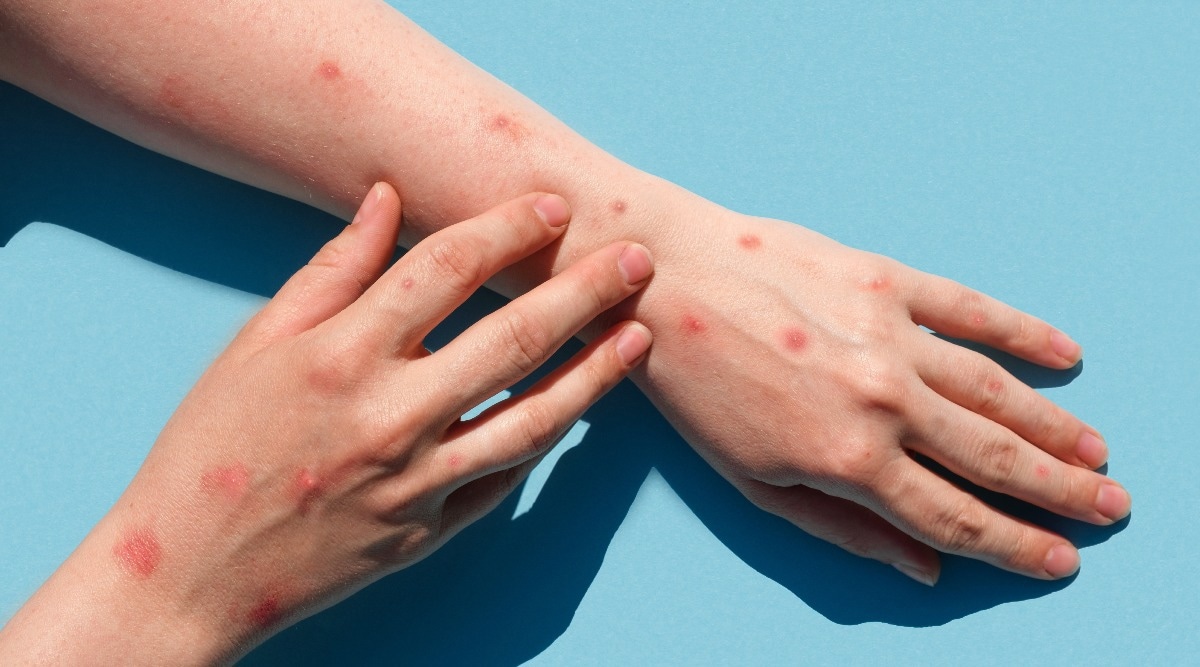In a recent study published in the Frontiers of Medicine journal, researchers assessed the various aspects of the global monkeypox outbreak.
 Study: Unusual global outbreak of monkeypox: what should we do? Image Credit: Marina Demidiuk/Shutterstock
Study: Unusual global outbreak of monkeypox: what should we do? Image Credit: Marina Demidiuk/Shutterstock
In recent times, monkeypox infections have become a subject of global concern amid the ongoing coronavirus disease 2019 (COVID-19) pandemic. Monkeypox is caused by the monkeypox virus and is an acute rash zoonosis. The monkeypox virus was initially found in Africa, but its recent re-emergence is novel since monkeypox outbreaks have now also been noted in several non-endemic countries.
Biological characteristics
In the present study, researchers summarized studies based on monkeypox, which described the various aspects of the infection and highlighted the transformation of the viral transmission mechanism and its impact on the monkeypox outbreak.
The monkeypox virus is from the Poxviridae family of the Orthopoxvirus genus. Poxviruses are the most complex set of deoxyribonucleic acid (DNA) viruses. The monkeypox virus exists in two distinct forms of infectious virus particles, namely, the extracellular enveloped virions (EVs) and intracellular mature virions (MVs). This virus comprises soluble antigens, erythrocyte agglutinins, and nucleoprotein antigens and is cross-immunogenic to three orthopoxviruses that can infect humans.
Since the monkeypox virus shares soluble and structural antigens with other orthopoxviruses, it is difficult to differentiate between poxvirus and smallpox virus in agar diffusion tests and other binding tests.
At present, the function and structure of several types of monkeypox proteins have been analyzed and predicted, while many studies have assessed the gene variation in monkeypox viruses. However, the expression status and function of some genes require further research.
Some studies have noted that the viral strain associated with the current monkeypox outbreak in May 2022 is a divergent clade of the monkeypox outbreaks from 2018-19 observed in some endemic countries. However, the studies highlighted several distinctions in disease severity, transmission routes, and host susceptibility.
Mechanisms of transmission and pathogenesis of monkeypox virus
Monkeypox has been found to spread comparatively less efficiently from person to person. However, the incidence rates of infection are increasing every year. Transmission of the virus has been observed to occur through salivary or respiratory excretions or due to contact with either crust material or lesion exudate, which can impact the mucous membranes of the nose, throat, eyes, and wounded skin. Furthermore, the virus spreads only through prolonged face-to-face contact that lasts over three hours within a two-meter radius without using personal protective equipment.
Monkeypox can also be transmitted to a fetus from pregnant women via the placenta or to children from infected parents through skin contact. Recently, sexual contact has also been attributed as a potential transmission route, particularly in male-to-male contact.
In the period between infection and the appearance of rashes, there is a complex series of events wherein the virus enters the host through either damaged skin or mucous membrane before it is distributed throughout the host via the blood and lymph via infected leukocytes. The virus is subsequently replicated and multiplies within the regional lymph node. The viruses reach skin epithelial cells and other tissues throughout the blood circulation. Viral deposits in the skin multiple over many days before the macroscopic lesions appear. Viral replication, as well as invasion of skin epithelial cells, result in superficial dermal inflammation, which further leads to hyperemia, vasodilation, and inflammatory cell infiltration, giving rise to a rash.
Clinical characteristics
The human monkeypox virus has symptoms similar to those of the smallpox virus. The incubation period associated with monkeypox is between five and 21 days. Monkeypox-infected persons initially have flu-like symptoms, which include headaches, fever, muscle soreness, fatigue, and enlarged lymph nodes. The swollen lymph nodes observed in these patients are firm and tender and are usually present in the cervical, inguinal, or submandibular regions.
A rash is visible in infected patients approximately one to three days after symptoms such as fever and lymphadenopathy, which initially begin with macules and papules. The lesions subsequently develop into herpes, giving rise to pus-filled pustules and fluid-filled blisters, followed by the formation of scabies. Each of these symptoms lasts almost one to two days.
Therapeutics and vaccines
Currently, there is no particular treatment available for monkeypox infections. Since it is a self-limiting disease, most infected patients do not need medical intervention. The primary treatment approaches include prevention and treatment of complications, symptomatic support treatment, replenishment of nutrition and water, and antibiotics.
The monkeypox outbreak can be successfully controlled with antiviral drugs like tecovirimat, brincidofovir, and cidofovir, along with the smallpox vaccines and vaccinia immune globulin (VIG). No data supports the effectiveness of brincidofovir, cidofovir, and VIG in monkeypox treatment.
Moreover, while tecovirimat is effective in treating orthopoxvirus-induced disease, there is no evidence to support its effectiveness against monkeypox.
Overall, the study findings highlighted the need to strengthen awareness and research of the monkeypox virus to understand the virus and develop more accurate diagnostic and treatment approaches.